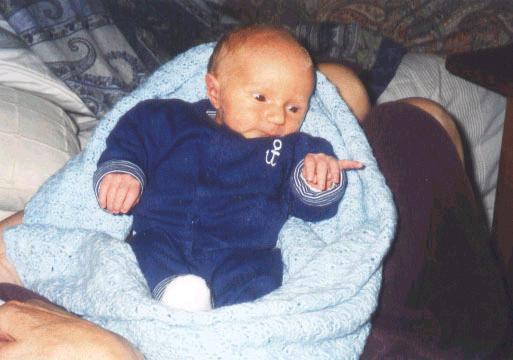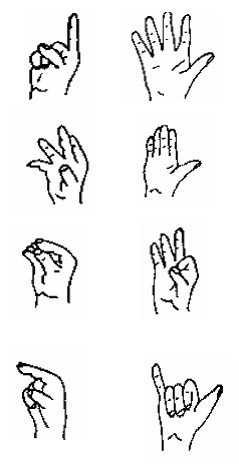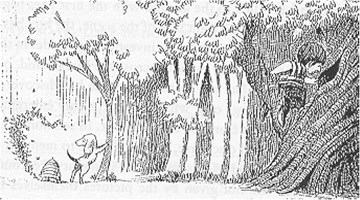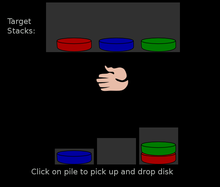Research overviewI am a developmental Psychologist interested in how early deafness impacts on language and cognitive development.Language development. My early research concentrated on comparisons between sign and spoken language development and my PhD described this with narrative skills. In the first studies I used spontaneous language samples from 2 families of native signers (deaf children of deaf parents). During this period I co-edited the IASCL volume in 2002 with Bencie Woll on sign acquisition. I then moved on to look at the effects of different experiences of learning language i.e. being born to deaf and hearing parents. My current work on language is involving more experimental studies with BSL in adults and also gestures and spoken language in deaf children. This last factor is to do with the changes in how language is being used by this group. The research question now is why there is so much variability in how completely deaf children learn spoken language. Click here for an interview by IASCL on language developmentI have been looking at language impairments in signing and gestures. This research looks at common and differing patterns of breakdown. Linked to this area I worked in my post-doc with Neil Smith (UCL) and how Christopher the language savant would learn BSL. Our latest project is categorising groups of young deaf children with Cochlear Implant to see if their delays in spoken language development are explained by environment, general cognitive-neurological deficits or a language learning impairment.Language and Cognition. The relationship between language and cognitive development is complex. I have looked at this in relation to Theory of Mind and now with the development of Executive Functions. A common theme is emerging, linked to the quality of early interaction (communication) and its role in setting up language structures. Also that the relationship between language and cognition changes over development. The best articulation of that idea is written up as a chapter to appear with Matt Dye.Here is a recent interview on deaf children's cognitive development (sorry in Spanish) https://www.uoc.edu/portal/es/news/entrevistes/2014/gary-morgan.htmlGesture-sign interface. In other areas I am investigating how children learn about iconicity and gesture. Linked to this last question I have been exploring how signed languages have evolved from co-speech gesture and what role language development (in adults and children) has played during this transition. I am leading an international project looking at how hearing adults lean signing and what role gesture plays in this.A lot of things happened during 2005-2015 because of ESRC funding to run a research centre. Click here - to go to the DCAL research centre which was set up between Bencie Woll, Ruth Campbell, Gabriella Vigliocco, Mairead MacSweeney and Gary MorganPapers are downloadable, contact me for copies if not.
Martínez López, V. & Morgan, G. (2019). Phonological development in Spanish deaf children/Desarrollo fonológico tardío en niños españoles con pérdidas auditivas bilaterales (in English/Spanish). Infancia y Aprendizaje Now working with Spanish children. Garraffa, M., Guasti, M.T., Marinis, T. & Morgan, G. (2017). Language Acquisition in Diverse Linguistic, Social and Cognitive Circumstances. Frontiers in Psychology Research Topic Pierce, L., Genesee, F., Delcenserie, A. & Morgan, G. (2017).Toward a model of multiple paths to language learning: Response to commentaries. Applied Pscholinguistics Pierce, L., Genesee, F., Delcenserie, A. & Morgan, G. (2017). Linking Early Language Experiences and Language Learning Outcomes. Special target article which will be published with a range of commentaries and our response to these. Applied Pscholinguistics.
Thompson, R., England, R., Woll, B., Lu, J. Mumford, K. & Morgan, G. (2017). Deaf and hearing children’s picture naming: Impact of age of acquisition and language modality on representational gesture. The gesture–sign interface in language acquisition / L’interface geste–signe dans l’acquisition du langage. Special issue of Language, Interaction and Acquisition 8:1 (2017) Perniss, P., Lu, J., Morgan, G. & Vigliocco, G. (2017). Mapping language to the world: The role of iconicity in the sign language input. Developmental Science Morgan, G. (2017). Trying to make sense of language synthesis. Commentary on Lillo-Martin et al. The development of bimodal bilingualism Linguistic Approaches to Bilingualism 6:6, 799-801 Mann,
W., Sheng, L. & Morgan, G. (2016). Lexical-Semantic
Organization in Bilingually Developing Deaf Children with ASL Dominant
Lu, J., Jones, A. & Morgan, G. (2016). The impact of input quality on early sign development in native and non-native language learners. Journal of Child Language, Special Issue on critical periods Mann, W., Roy, P. & Morgan, G. (2016). Adaptation of a Vocabulary Test from British Sign Language to American Sign Language. Language TestingMorgan, G (2015). On language acquisition in speech and sign: development of combinatorial structure in both modalities. Frontiers in Psychology: Language Sciences.Perez,
M., Valsameda, M. & Morgan, G.
(2015). Bilingual
sign education in Madrid, Spain. In. G, Tang, H. Knoors
& M. Marschark. Bilingualism and Bilingual Deaf Education Singleton, J., Martin, A.
& Morgan, G. (2015). Ethics, Deaf-Friendly Research,
and Good Practice When Studying Sign Languages. In E.
Orfanidou, B. Woll, & G. Morgan. Research Methods in Sign
Language Studies: A Practical Guide. Wiley-Blackwell.
Morgan,
G. (2014). Critical
Period in Language Development. In P. Brookes & V.
Kempe (Eds). Encyclopedia
of Language Development. Sage press.
Marshall,
C,. Mann, W. &
Morgan, G.
(2011).
Short-term memory in signed languages:
Not just a disadvantage for serial recall. Front. Psychology 2:102
Mann,
W., Marshall, C., Mason, K., & Morgan, G. (2010). The
acquisition of sign language: the impact of phonetic complexity on phonology.
Language Learning and Development 6, 60-86
Ortega, G.; Morgan, G. (2010). Comparing child and adult development of a visual phonological system. Language, Interaction and Acquisition. 1 (1) 67-81. Morgan, G., Herman, R., Barriere, I. & Woll, B. (2008). The onset and mastery of spatial language in children acquiring British Sign Language, Cognitive Development, 23, 1-9. Commentary on the paper by Dan Slobin Marshall,
C. & Morgan, G. (2008). Review
of Visible
Morgan, G., Barrett-Jones, S. & Stoneham, H. (2007). The first signs of language: phonological development in British Sign Language. Applied Psycholinguistics, 28, 3-22 Morgan, G. & Woll, B. (eds). (2007). Understanding sign language classifiers through a polycomponential approach. Special Issue Lingua, 117, 7, 1159-1168. Morgan, G., Barriere, I. & Woll, B. (2006) The influence of typology and modality in the acquisition of verb agreement in British Sign Language. First Language, 26, p19-44. Morgan, G. (2006). Children are just lingual: The development of phonology in BSL. Lingua, 116, 1507-1523 Morgan, G. (2005). What is Homesign? Review of S. Goldin-Meadow (2003). The resilience of Language. Psychology press. Journal of Child Language, 32, 925-928. Morgan, G., Barriere, I. & Woll, B. (2003). First verbs in British Sign Language development. Working Papers in Language and Communication Science, vol. 2 pp 57-66 Morgan,
G (2003). Transcription of child sign language.
Journal of Deafness and Education International, 5: 3, 157-166.
Morgan, G., Herman, R. & Woll, B. (2002). The development of complex verb constructions in BSL. Journal of Child Language, 29, 655 -675. Morgan, G. & Woll, B. (2002). (eds) Directions in sign language acquisition. Amsterdam: John Benjamins Narrative development
Jones, A., Marshall, C., Botting, N., Atkinson, J., Toscana, E., Denmark, T., Herman, R. & Morgan, G. (2016). Narrative skills in deaf children who use spoken English: dissociations between macro and microstructural devices. Research in Developmental Disabilities, 59, 268–282 Caballero,
M., Sanz-Torrent, M. & Morgan G. (2015). Desarrollo
narrativo en niños de habla Catalana: Adaptación del test
“Spider Story”
Bel, A., Ortells, M. & Morgan, G. (2014). Reference control in the narratives of adult sign language learners. International Journal of Bilingualism. Rathmann, C., Mann, W. & Morgan, G. (2007). Narrative structure and narrative development in deaf children. Deafness and Education International, 9, 187-196. Morgan, G. (2005). Transcription of child sign language: A focus on narrative Journal of Sign Language and Linguistics, 8, 119-130 Morgan,
G. (2005). The
development of narrative in British Sign Language. In , B. Schick; M.
Marschark & P. Spencer (eds). Advances in Sign Language Development in
Deaf Children.
Morgan,
G. (2002). The encoding of simultaneity in children's BSL
narratives. Journal
of Sign Language and Linguistics 5:2, 127-161.
Morgan, G. (2000). Discourse Cohesion in Sign and Speech. International Journal of Bilingualism, 4, 279-300. Morgan, G. (1999). The development of discourse cohesion in BSL. Unpublished PhD thesis. University of Bristol Morgan,
G. (1999). Event packaging in British Sign Language discourse. In E. Winston
(ed), Story Telling & Conversation: Discourse in Deaf Communities, pp 27-58.
Morgan,
G. (1999). Narrative development in British Sign Language. In C. Schelletter, C.
Letts and M. Garman (eds), Issues in Child Language: from Phonology to Narrative.
Morgan,
G. (1997) Learning to use referential space in sign language discourse In K.
Bernhardt (ed), Papers in Linguistics from the Univ. Manchester 1, p145-156.
Morgan,
G. (1996) Spatial anaphoric mechanisms in British Sign
Language. In
Morgan,
G. (1996) Discourse organisation in a British Sign Language Narrative. In E.
Pedro (ed), Discourse Analysis. Lisbon: Colibri.
Go to our project on early ToM development in deaf children website - click here
Sidera, F.; Serrat, E. & Morgan, G (in press). Understanding of Pretend Emotions in children who are deaf and hard of hearing Morgan, G. & Dye, M. (in press). Executive Functions and Access to Language: The Importance of Intersubjectivity. In M. Marcshark & H. Knoors (eds). The Oxford Handbook of Deaf Studies in Learning and Cognition. Kelly, C., Freeth, M., Morgan, G. & Mathews, D. (2019). The Understanding of Communicative Intentions in Children with Severe-to-Profound Hearing Loss. Journal of Deaf Studies and Deaf Education Jones, A., Marshall, C., Botting, N. St Clair, M., Atkinson, J. and Morgan, G. (2019). Expressive vocabulary predicts non-verbal executive function: a 2-year longitudinal study of deaf and hearing children. Child Development, This is the 2 year follow up on a sub-group of the Botting et al (2016) paper below. Sidera, F.; Serrat, E.,; Amadó, A. & Morgan, G (2018). Emotion recognition skills in children with hearing loss. What is the role of language? In Atypical Language Development in Romance Languages (2018) edited by Eva Aguilar-Mediavilla, Lucía Buil-Legaz, Raül López-Penadés, Víctor Sánchez-Azanza & Daniel Adrover-Roig (eds). Marshall, C., Fastelli A., Jones, A., Botting, N., Atkinson-Hearn, J. & Morgan, G. (in press). Morgan, G., Meristo, M. & Hjelmquist, E. (in press). Conversational experience, language and the development of Theory of Mind. In V. Slaughter (ed). Environmental Influences on Theory of Mind Development: Festschrift for Candi Peterson. Psychology Press. Botting, N., Jones, A., Marshall, C., Denmark, T., Atkinson,
J., & Morgan, G. (2016). Marshall C, Jones A, Denmark T, Mason K, Atkinson J, Botting N and Morgan G (2015). Deaf children's non-verbal working memory is impacted by their language experience. Front. Psychol. 6:527. Morgan, G. (in press). Social-cognition for learning as a deaf student. In H. Knoors & M. Marschark. Educating Deaf Students: Creating a Global Evidence Base. Oxford University Press.
Morgan, G. Meristo, M., Mann, W., Hjelmquist, E., Surian, L., & Siegal, M. (2014). Mental state language and quality of conversational experience in deaf and hearing children. Cognitive Development, 29, 41–49 Meristo, M., Morgan, G., Geraci,
A., Iozzi, L., Hjelmquist, E., Surian, L., & Siegal, M.
(2014). Belief
attribution in deaf and hearing infants. Developmental
Science.
Meristo,.
M., Hjelmquist, E., & Morgan, G. (2012). How access to language affects
theory of mind in deaf children. In M. Siegal & L. Surian (Eds.).
Access to language and cognitive development.
Herman, R.
& Morgan, G. (2011). Deafness,
Language and Communication. in K. Hilari and N. Botting (eds). The
Impact of Communication Disability Across the Lifespan. J&R Press Ltd, Meristo et al. (2010). Belief-attribution in deaf and hearing infants: Evidence for the importance of conversational input. Opening Conference of the Cognitive Development Center, January 15-16 2010, Budapest, Hungary Morgan,
G. & Kegl, J. (2006) Atypical Language Development
Herman, R, Shield, A. & Morgan, G. (2019). Sign language development in deaf children with language impairments and autism spectrum disorders. In Manual Sign Acquisition in Children with Developmental Disabilities (N. Grove & K. Launonen, Eds). Pp 133-151 Mann, W., Peña, E., & Morgan, G. (2018). Child Modifiability as Predictor of Language Abilities in Deaf Children who use American Sign Language. American Journal of Speech-Language Pathology Marshall, C. & Morgan, G. (2018). Investigating sign language development, delay and disorder in deaf children. In M. Marschark & P. Spencer. The Oxford Handbook of Deaf Studies in Language: Research, Policy, and Practice. Marshall, C., JA, KM, K.R, B.W, & Morgan, G. (2016). Sentence repetition in deaf children with specific language impairment in British Sign Language. Language Learning and Development. Mann,
W., Peña, E. & Morgan, G. (2014). Exploring
the Use of Dynamic Language Assessment with Deaf Children who
use American Sign Language: Two Case Studies. Journal of
Communication Disorders. Herman,
R., Rowley, K., Mason, K. & Morgan,
G. (2014). Deficits
in narrative abilities in child British Sign Language users
with specific language
impairment. International Journal of Language and Communication
Disorders, 49, 343-353
Herman,
R., JA, KM, K.R, B.W, & Morgan,
G. (2014). Profiling
and profiling SLI in Deaf children who are sign language
users. In D. Quinto-Pozos (ed). Multilingual Aspects of
Signed Language Communication and Disorder. Multilingual
Matters. Marshall, C., Rowley, K., Mason, K., Herman, R. & Morgan, G. (2012). Lexical organization in deaf children who use British Sign Language: Evidence from a semantic fluency task. Journal of Child Language. Woll,
B. & Morgan, G. (2012). Language
impairments in the development of sign: Do they reside in a
specific modality or are they modality-independent deficits?
Bilingualism, Language & Cognition, 15, 75-87.
Mason, K., Rowley, K. Marshall, C.R.,
Atkinson, J. Herman, R. Woll, B. & Morgan, G. (2010). Identifying
Specific Language Impairment in Deaf children acquiring
British Sign Language: Implications for theory and practice.
Morgan, G., Smith, N., Tsimpli, I.M. & Woll, B. (2007). Classifier learning and modality in a polyglot savant. Lingua, 117, 7, 1339-1353 Morgan,
G., Herman. & Woll B (2007). Language impairments in sign language:
breakthroughs and puzzles. International Journal of Language and Communication
Disorders, 42, 97-105
Marshall,
C. R.
Denmark, T. & Morgan, G. (2006) Investigating the underlying causes of
SLI: a non-sign repetition test in British Sign Language. Advances in
Speech-Language Pathology 8(4): 347 – 355. Morgan,
G. (2005). Biology
and Behaviour: Insights from the acquisition of sign language. In
A.
Cutler (ed). Twenty-First Century Psycholinguistics: Four Cornerstones.
Morgan,
G., Smith, N., Tsimpli, I.M. & Woll, B. (2002). Language against the
odds: the learning of BSL by a polyglot savant. Journal of
Linguistics, 38, 1-41 Morgan,
G., Woll, B., Smith, N, & Tsimpli, I.M. (2002). The
effects of modality on BSL development in an exceptional learner. In R.
Meier, Cormier, K. A. & Quinto, D.G.
(eds), Modality and structure in signed and spoken language.
Gesture and signs - news on a new grant to investigate how hearing people learn sign language Cocks, N., Byrne, S., Pritchard, M., Morgan, G. and Dipper, L. (2018), Integration of speech and gesture in aphasia. International Journal of Language & Communication Disorders. Pritchard, M., Dipper, L., Morgan, G. & Cocks, N. (in press). The language-gesture connection: evidence from aphasia. Clinical Linguistics & Phonetics Ortega, G., & Morgan, G. (2015). Input processing at first exposure to a sign language. Second language research.
Pritchard,
M., Dipper, L., Morgan, G. & Cocks, N. (2015). Impaired
integration of gesture and speech in aphasia. International Journal of
Language & Communication Disorders.
Pritchard, M., Dipper, L., Morgan, G. & Cocks, N. (2015). Language and Iconic Gesture Use in Procedural Discourse by Speakers with Aphasia. Aphasiology Ortega, G. & Morgan, G. (2015. The effect of iconicity in the mental lexicon of hearing non-signers and proficient signers: Evidence of cross-modal priming. Language, Cognition and Neuroscience, 30(5), 574-585 Marshall, C. & Morgan, G. (2015). From gesture to sign language: Conventionalisation of classifier constructions by adult hearing learners of British Sign Language. Topics in Cognitive Science. Perniss, P., Özyürek, A., & Morgan, G. (2015). The influence of the visual modality on language structure and language conventionalization: Insights from sign language and gesture. Topics in Cognitive Science. 7(1), 2-11. Ortega, G. & Morgan, G. (2015). Phonological development in hearing learners of a sign language: The role of sign complexity and iconicity. Language Learning. Orfanidou,
E., Woll, B. & Morgan, G.
(2015). Research Methods in Sign Language
Studies: A Practical Guide. Wiley-Blackwell. Sign segmentation - click here for more information Orfanidou, E., Adam, R., McQueen, S. & Morgan, G. (2015). Segmentation of British Sign Language (BSL): Mind the gap! Quarterly Journal of Experimental Psychology. Cocks, N., Dipper, L., Pritchard, M. & Morgan, G. (2013). The impact of impaired semantic knowledge on spontaneous iconic gesture production. Aphasiology
Adam,
R., Orfanidou, E., McQueen,
J & Morgan, G. (2012). Sign language comprehension:
Insights from misperceptions of different phonological
parameters. In R. Channon & H. Van der Hulst. Formational
Units in the Analysis of Signs. Ishara Press. (pp 87-106). Cocks, N., Morgan, G. & Kita, S. (2011). Iconic gesture and speech integration in younger and older adults. Gesture 11, 24–39. Dipper, L., Cocks, N., Rowe, M & Morgan, G. (2011). What can co-speech gestures in aphasia tell us about the relationship between language and gesture?: A single case study of a participant with Conduction Aphasia. Gesture, 11, 2, 123–147 Cocks, N,. Dipper, L., Middleton, R. & Morgan, G. (2011). What can iconic gestures tell us about the language system? A case of conduction aphasia. International Journal of Language & Communication Disorders. 46, 423–436 Botting, N., Riches, N., Gaynor, M., Morgan, G. (2010). Gesture production and comprehension in children with specific language impairment. British Journal of Developmental Psychology, 28, 51-69
Cocks,
N., Sautin, L., Kita, S., Morgan,
Orfanidou, E.,
Adam, R., Morgan, G., & McQueen, J.M. (2010) Orfanidou, E., Adam, R. McQueen, J. & Morgan, G. (2009). Making sense of nonsense in British Sign Language (BSL): The contribution of different phonological parameters to sign recognition. Memory and Cognition 37, 302-315
|









